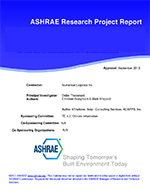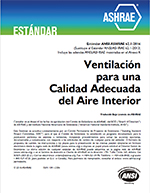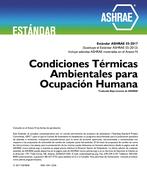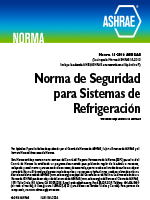Description
The performance of pipe insulations used in district heating and cooling under moisture attack has been investigated. The objectives of the experiment are (a) to determine the effect of moisture content on the effective thermal conductivity of pipe insulations used in district heating and cooling, (b) to ascertain the moisture absorption rates of various pipe insulations under conditions similar to those found in operating systems which have failed, (c) to determine to what extent insulations can be dried out once the source of moisture is removed, (d) to obtain thermal conductivity data for current DHC piping insulations, and (e) to update and expand the thermal conductivity data in Chapter 11 of the Systems Volume of ASHRAE Handbook. Four commercial pipe insulations were tested: mineral wool, fibrous glass, cellular glass, and polyurethane. All insulations were tested at pipe temperatures from 35°F to 450°F, except polyurethane which was tested from 35°F to 260°F. The surrounding water was maintained from 46°F to 100°F to simulate the possible conduit water temperatures.
For each insulation tested, the thermal conductivity of the dry insulation was first measured and compared with the manufacturer’s data. The insulation was then tested under a flooded condition with the inner surface being heated or cooled by the pipe. After the effective thermal conductivity of the saturated insulation was measured, the surrounding water was drained and the insulation was dried while the inner surface remained heated or cooled. The insulation was weighed and the effective thermal conductivity was measured during the drying process.
Among the insulations tested, water absorption time was shortest with fibrous glass. Cellular glass demonstrated the best moisture resistant performance when tested under the cooled condition; however, it cracked under the heated condition. Under the heated condition, the effective thermal conductivity of the wet mineral wool insulation can be, depending on the insulation and the surrounding water temperatures, 50 times higher compared with dry insulation. The effective thermal conductivity of the wet fiberglass insulation is from 52 to 185 times higher, and that of wet polyurethane is from 14 to 19 times higher compared with the dry insulation values. The effective thermal conductivity of cellular glass is dominated by a periodic two-phase flow phenomenon within the cracks, and an averaged value of 10.1 times that of dry cellular glass was obtained. Polyurethane has the lowest thermal conductivity values under the wet condition, while fiberglass has the highest. Mineral wool has thermal conductivity values comparable to polyurethane, but mineral wool is applicable at higher operating temperatures than polyurethane. The effective thermal conductivity data of wet insulations were correlated as functions of insulation mean temperature and surrounding water temperature. Correlations were also developed in the form of Nusselt number vs. Rayleigh number for mineral wool and fibrous glass.
Under the cooled test condition, fibrous glass again took the shortest time for water absorption. The effective thermal conductivity of saturated mineral wool is about 14 times higher than the dry mineral wool; the effective thermal conductivity of saturated fibrous glass is about 20 times higher than the dry value. The effective thermal conductivity of saturated polyurethane was from 50% to 200% higher than the dry polyurethane, and was typically only about 10% of the value under the heated condition. There was no significant increase in the effective thermal conductivity of cellular glass during submersion. Polyurethane has the lowest effective thermal conductivity among all the wet pipe insulations tested, followed by cellular glass, mineral wool, and fibrous glass. For all the insulations tested under both heated and cooled conditions, the increased effective thermal conductivity during submersion either returned or demonstrated a clear tendency returning to the value before submersion after drying.
Sponsor: TC 6.2, District Energy
Conducted: September 1992 – June 1996
Product Details
- Published:
- 1996
- Number of Pages:
- 124
- File Size:
- 1 file , 2.1 MB
- Product Code(s):
- D-RP-721




